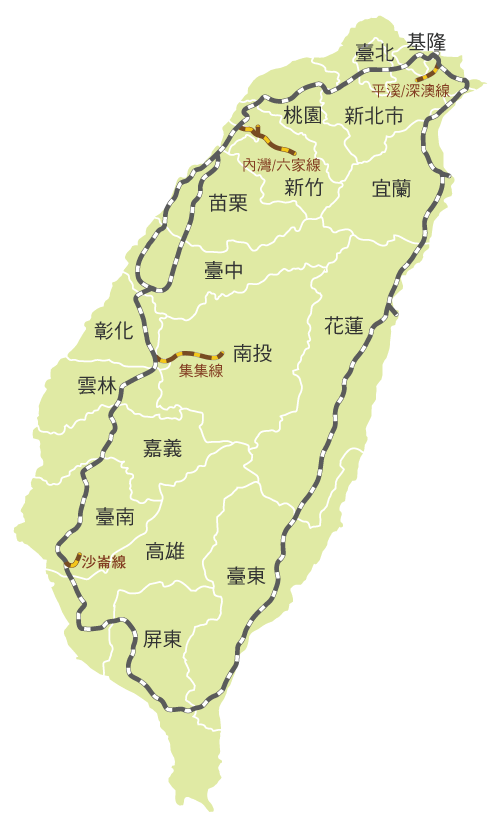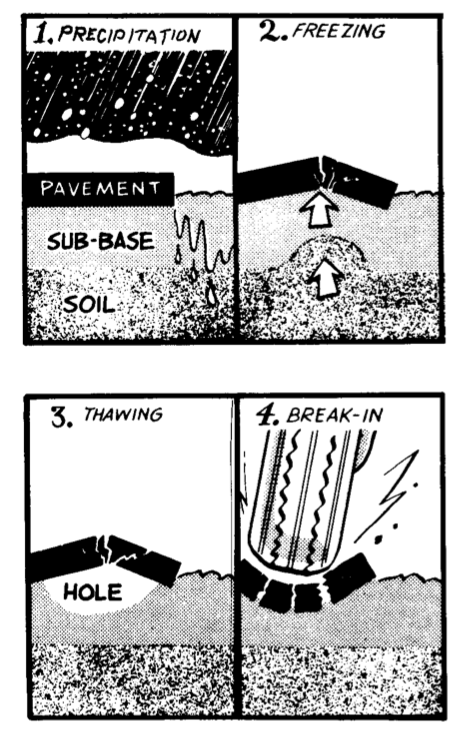|
Nuannuan District, Keelung
Nuannuan District (), also Nuan Nuan, is a district of the city of Keelung, Taiwan. History During the period of Japanese rule, included modern day Nuannuan and Qidu District and was governed under of Taihoku Prefecture. Geography * Area: 22.8283 km2 * Population: 38,155 people (May 2022) Administrative divisions The district consists of thirteen urban villages: * Baxi/Basi (), Badu (), Banan (), Guogang (), Dingnei (), Dinghe (), Nuantong (), Nuannuan (), Nuandong/Nuantung (), Nuanxi/Nuansi (), Bazhong/Bajhong (), Dingan/Ding-an/Ding'an () and Dingxiang/Dingsiang () Village. Tourist attractions * Nuannuan Ande Temple (暖暖安德宮) * Chinshan Temple (金山寺) * Haihue Temple * Hsishih Reservoir * Nuannuan Sport Park * Nuantung Nursery Garden * Nuantung Nursery Garden Farm Park * Potholes at Nuanchiang Bridge Transportation * TRA Badu Station * TRA Nuannuan Station Notable natives * Jiang Yi-huah, Premier of the Republic of China The Prem ... [...More Info...] [...Related Items...] OR: [Wikipedia] [Google] [Baidu] |
District (Taiwan)
Districts are administrative subdivisions of the Taiwan, Republic of China (Taiwan)'s special municipality (Taiwan), special municipalities of the second level and provincial city (Taiwan), provincial cities of the third level formerly under its Provinces of China, provinces. There are two types of district in the administrative scheme. Ordinary districts are governed directly by the municipality/city government with district administrators appointed by the mayors to four-year terms. The mountain indigenous district is a local government body with elected district chiefs as well as district council serving four-year terms. History The first administrative divisions entitled "districts" were established in the 1900s when Taiwan was Taiwan under Japanese rule, under Japanese rule. After the World War II, nine (9) out of eleven (11) Cities of Japan, prefectural cities established by the Japanese government were reform into provincial cities. These cities are Changhua, Chiayi, Hsin ... [...More Info...] [...Related Items...] OR: [Wikipedia] [Google] [Baidu] |
Jiang Yi-huah
Jiang Yi-huah (; born 18 November 1960) is a Taiwanese politician and former Premier of the Republic of China (ROC). On 29 November 2014, he tendered his resignation and was succeeded by Mao Chi-kuo on 8 December 2014. Prior to his appointment as the Premier, Jiang was the Vice Premier of the Republic of China from 2012 to 2013. He served as Minister of the Interior from 2009 to 2012 and Minister of Research, Development and Evaluation Commission of the Executive Yuan from 2008 to 2009. Early life Jiang was born into a Hakka family in Keelung, a city in northern Taiwan in 1960. During high school when he was 13, it was reported that he once wrote an essay saying that his dream career is to be the President of the Republic of China once he grow up. He earned his bachelor's and master's degree in political science from National Taiwan University (NTU). He did his doctoral degree in political science from Yale University, United States in 1993. Upon graduation, he returned to Ta ... [...More Info...] [...Related Items...] OR: [Wikipedia] [Google] [Baidu] |
Nuannuan Railway Station
Nuannuan () is a railway station on the Taiwan Railways Administration Yilan line located in Nuannuan District, Keelung, Taiwan. History The station was opened on 5 May 1919. Around the station * Nuannuan Ande Temple * Nuannuan Sports Park * Nuannuan Waterfront Park See also * List of railway stations in Taiwan There are currently six operating railway systems in Taiwan: The two Inter-city rail systems, Taiwan Railways and Taiwan High Speed Rail, have several overlaps in station names. See below ''Taiwan High Speed Rail'' section for their relations in ... References 1919 establishments in Taiwan Railway stations in Keelung Railway stations opened in 1919 Railway stations served by Taiwan Railways Administration {{Taiwan-railstation-stub ... [...More Info...] [...Related Items...] OR: [Wikipedia] [Google] [Baidu] |
Badu Railway Station
Badu Station () is a railway station at the junction of the Taiwan Railways Administration West Coast line and the Yilan line. It is the western terminus of the Yilan line and is located in Nuannuan District, Keelung, Taiwan. History The station was opened in 1899 during Japanese rule. In April 1914, the rail line from Keelung to ''Haccho'' (Badu) was completed. The station has served as an important transfer point between the West Coast line and the Yilan line since 1919, when the first segment of the Yilan line was built in the same year. The occurred in March 1947, as a part of anti-government protests known as the February 28 incident. Civilians began protesting at Badu railway station on 1 March 1947 the government response to the events of the previous day, and attacked National Revolutionary Army servicemen. Military forces returned ten days later, killing between five and eight station employees, while also removing at least eight more from their posts. The latter g ... [...More Info...] [...Related Items...] OR: [Wikipedia] [Google] [Baidu] |
Taiwan Railways Administration
Taiwan Railways Administration (TRA) is a railway operator in Taiwan. It is an agency of the Ministry of Transportation and Communications, responsible for managing, maintaining, and running conventional passenger and freight railway services on 1097 km of track in Taiwan. Since Taiwan is heavily urbanised with a high population density, railways have played an important part in domestic transportation since the late 19th century. Passenger traffic in 2018 was 231,267,955. The agency's headquarters are in Zhongzheng District, Taipei. Overview Railway services between Keelung and Hsinchu began in 1891 under China's Qing dynasty. Because the railway was completely rebuilt and substantially expanded under the operated by Formosa's Japanese colonial government (1895–1945), the network's Japanese influence and heritage persists. Similarities between the TRA and the Japan Railways (JR) companies can be noted in signal aspects, signage, track layout, fare controls, sta ... [...More Info...] [...Related Items...] OR: [Wikipedia] [Google] [Baidu] |
TRA EMU539 At Nuannuan Station 20080803
Tra or TRA may refer to: Biology * TRA (gene), in humans encodes the protein T-cell receptor alpha locus * Tra (gene), in ''Drosophila melanogaster'' encodes the protein female-specific protein transformer * Tra gene, a transfer gene * Triple releasing agent or serotonin-norepinephrine-dopamine releasing agent Organizations * Taiwan Railways Administration, the main railway system in Taiwan * Tanzania Revenue Authority * Telecommunications Regulatory Authority of Lebanon * Telecommunications Regulatory Authority (UAE) * Tennessee Regulatory Authority, for public utilities * Theodore Roosevelt Association * TRA, Inc., US ad measurement company * Trinity River Authority, Texas, US * Tripoli Rocketry Association, US People * Tra Hoa Bo Dê, King of Champa (in what is now southern Vietnam) 1342−1360 * Phạm Văn Trà (born 1935), Vietnamese general * Trần Văn Trà (1918–1996), North Vietnamese general * William Tra Thomas (born 1974), former US footballer Other * tRA (baseba ... [...More Info...] [...Related Items...] OR: [Wikipedia] [Google] [Baidu] |
Potholes At Nuanchiang Bridge
A pothole is a depression in a road surface, usually asphalt pavement, where traffic has removed broken pieces of the pavement. It is usually the result of water in the underlying soil structure and traffic passing over the affected area. Water first weakens the underlying soil; traffic then fatigues and breaks the poorly supported asphalt surface in the affected area. Continued traffic action ejects both asphalt and the underlying soil material to create a hole in the pavement. Formation According to the US Army Corps of Engineers's Cold Regions Research and Engineering Laboratory, pothole formation requires two factors to be present at the same time: water and traffic. Water weakens the soil beneath the pavement while traffic applies the loads that stress the pavement past the breaking point. Potholes form progressively from fatigue of the road surface which can lead to a precursor failure pattern known as crocodile (or alligator) cracking. Eventually, chunks of pavement b ... [...More Info...] [...Related Items...] OR: [Wikipedia] [Google] [Baidu] |
Nuannuan Sport Park
Nuannuan District (), also Nuan Nuan, is a district of the city of Keelung, Taiwan. History During the period of Japanese rule, included modern day Nuannuan and Qidu District and was governed under of Taihoku Prefecture. Geography * Area: 22.8283 km2 * Population: 38,155 people (May 2022) Administrative divisions The district consists of thirteen urban villages: * Baxi/Basi (), Badu (), Banan (), Guogang (), Dingnei (), Dinghe (), Nuantong (), Nuannuan (), Nuandong/Nuantung (), Nuanxi/Nuansi (), Bazhong/Bajhong (), Dingan/Ding-an/Ding'an () and Dingxiang/Dingsiang () Village. Tourist attractions * Nuannuan Ande Temple (暖暖安德宮) * Chinshan Temple (金山寺) * Haihue Temple * Hsishih Reservoir * Nuannuan Sport Park * Nuantung Nursery Garden * Nuantung Nursery Garden Farm Park * Potholes at Nuanchiang Bridge Transportation * TRA Badu Station * TRA Nuannuan Station Notable natives * Jiang Yi-huah, Premier of the Republic of China (2013–2014) See ... [...More Info...] [...Related Items...] OR: [Wikipedia] [Google] [Baidu] |





